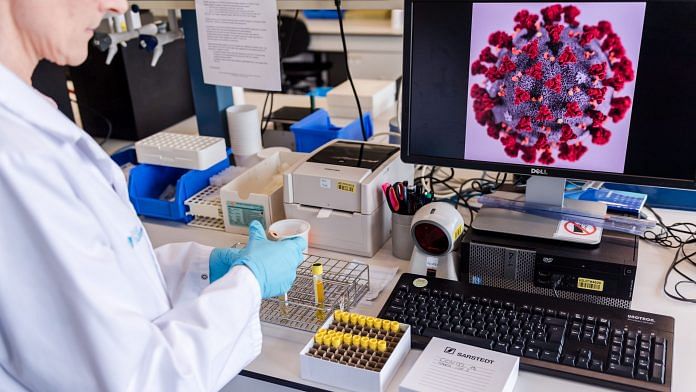The debate about when and whether the world can reopen keeps coming back to testing. If only we could test everyone all the time, the logic goes, we could isolate the ill and everyone else could go back to school, work and life as we once knew it.
Sadly, that’s not quite right. The prerequisite for reopening is better tests, not just more tests.
A “good test” has three properties: It’s rapid (like less than an hour), accurate and widely available. Only with all three can it be used to screen people before they go to the office, get on an airplane, or attend a class or conference. And only then — barring an effective vaccine — can authorities safely allow people to do all those things.
Current tests fall short. The turnaround time for typical nasal swabs that detect the virus’s RNA can be hours or days — far too long to be useful as a screen, and plenty of time for people to get infected while awaiting the results. And even if people were willing to wait in quarantine for days, many of the available tests are not accurate. They have very high false negative rates, meaning that they would erroneously allow a lot of sick people to interact with everyone else, all but guaranteeing more super-spreader incidents. There are some promising tests that are both fast and relatively accurate, but they require nearby expensive machines, so they won’t become universally available.
Checking people’s temperatures is no substitute. Thermometer guns and cameras are famously inaccurate, in part because the temperature of your face doesn’t necessarily reflect your internal temperature. More important, people infected with coronavirus are highly contagious long before they show any symptoms, and many never experience a fever.
Granted, current tests do have their uses. New York, for example, recently used antibody tests to estimate that about 15% of people in the state — and about 25% in New York City — had already been infected. This might be useful for understanding whether a place is nearing “herd immunity” — but only if infection grants immunity for a significant period, which we don’t know yet. Also, it’s worth noting that New York’s test wasn’t a random sample: Participants were selected at shopping centers, so the results aren’t representative of a population that is to some extent hunkering down at home.
None of this means that people shouldn’t use the available tests. Done right, testing and tracing can slow the pandemic’s spread. And even slow bad tests can provide some marginal risk mitigation for people working in hot spots. Hospitals should get access to the expensive machines to further mitigate risk. But the remaining danger, unavoidable in a hospital, is unacceptable in a college dormitory or industry conference. Which leaves sticking with social distancing, and requiring businesses to gear up with splash guards, partitions and credit card machines placed at a safe distance from cashiers. All imperfect, but helpful in reducing risk until a good test comes along.
I’m fantasizing about how things will look when a good tests emerges, for the months or years before a vaccine. Maybe people will get up in the morning and, before going to work, spit into a “smart test” envelope that verifies their identity and shares the result with them and anyone they indicated should have access. Same for getting on an airplane, attending or teaching a college class, or whatever else involves proximity to other humans. If the tests are widely available and people take them daily, small inaccuracies will be mitigated. It will be easy to take another test to be sure.
I want good news as much as anyone. Believe me when I say that I’d very much like to know if and when my college-aged sons will ever move out. But until there’s a good test, I’m not making any plans. –Bloomberg
Also read: How use of Chinese rapid testing Covid-19 kits created panic in a Kashmir village



